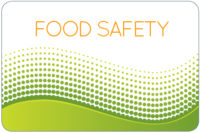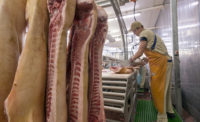
During the spring of 1993, in the midst of the E. coli O157:H7 outbreak, the Secretary of Agriculture asked me how many federally inspected beef plants in the United States had voluntarily implemented HACCP.
I had to tell him that out of almost 7,000 plants, less than 500 were practicing HACCP. It was at that time that the U.S. Department of Agriculture decided to begin the process of mandating HACCP for all federal and state inspected plants. Why did it take the death of four children to force us to use a food-safety prevention system that we had known was effective for over three decades?
Over the past 17 years, billions of dollars have been invested by the beef industry to implement an effective mandatory HACCP system that utilizes multiple-hurdle pathogen intervention systems. The job of continually improving the system is far from over, but we have made significant improvements from where we were in 1993.
I would give our beef industry and USDA a grade of “B-plus” for progressing to where we are today in regard to food safety. The grade is not an “A-minus” because we still are having recalls and illnesses, and we have a ways to go in both the pre- and post-harvest arenas. However, it still took a crisis to move us down the mandatory HACCP path, and now I am concerned that nothing short of an animal disease crisis will bring about an effective U.S. traceability system.
Where are we on animal disease traceability? The USDA is currently implementing the National Animal Identification System (NAIS) on a voluntary basis, with the objective of being able to trace the origin of an animal disease outbreak within 48 hours. I’m afraid that I have to give our industry and our government a grade of “D” in this area. Current shortfalls of the NAIS system include:
- Voluntary participation - How can we expect to accomplish the 48-hour traceback objective if we have voluntary participation?
- Does not require an electronic ID system - How can we expect to keep up with the records if the system is not electronically based?
Industry and government must either decide to do this right, or not at all. We seem to spend much of our time bickering among ourselves about the need for farm-to-market traceability systems and the disadvantage of having the government in our business. Meanwhile, our competitors in the international marketplace are moving rapidly forward in this area.
Is it going to take another crisis to force us down this path? As an industry, we had another wake-up call in December of 2003 with our first Bovine Spongiform Encephalopathy (BSE) case. That first positive BSE case cost our industry more than $15 billion. This number is “peanuts” compared to the impact of one positive Foot and Mouth Disease (FMD) animal in the United States, and if that positive happened tomorrow, we would be in serious trouble.
If the United States had an effective animal traceability system, the extent of devastation that a foreign animal disease could have on our industry could be lessened, not only because regulators would have the means necessary to properly locate and limit the outbreak, but our trading partners would also recognize our ability to protect our domestic herd and, thus, their consumers. Without an effective animal ID traceback system, the U.S. livestock, feeding and packing industries are vulnerable to the same outcomes of past foreign animal disease outbreaks around the world. How many more times can our industry afford to lose billions of dollars to a preventable or controllable threat?
If we hope to have any chance of surviving foreign animal disease events such as FMD, the U.S. traceability system must cover all movement of the animals from the farm to the packing plant. An effective system would prevent the movement of the animal through the marketplace without proper identification.
Australia and the EU already have such systems, and I fully realize that our cattle numbers are much larger. I also realize that our industry is fearful of the government knowing too much about our business. I understand all of these concerns, but the U.S. beef industry must prepare itself for the storms to come. Not discussed here are the obvious marketing advantages associated with an effective animal-to-carcass traceability system, but NAIS is not designed to be a source or age verification system.
There is no question that an animal traceability system is vital to the survival of our industry. Additionally, it is very unlikely that the U.S. beef industry will voluntarily implement an effective farm-to-market traceability system. As a result, USDA should begin taking steps to “mandate” traceability systems from the farm to the marketplace.
Without an animal traceability system, the U.S. livestock industry is at the mercy of animal diseases such as FMD and BSE. The development and implementation of animal traceability systems should not be triggered by an animal disease crisis.
It should happen now! It is time to stop the bickering and get it done!




Report Abusive Comment